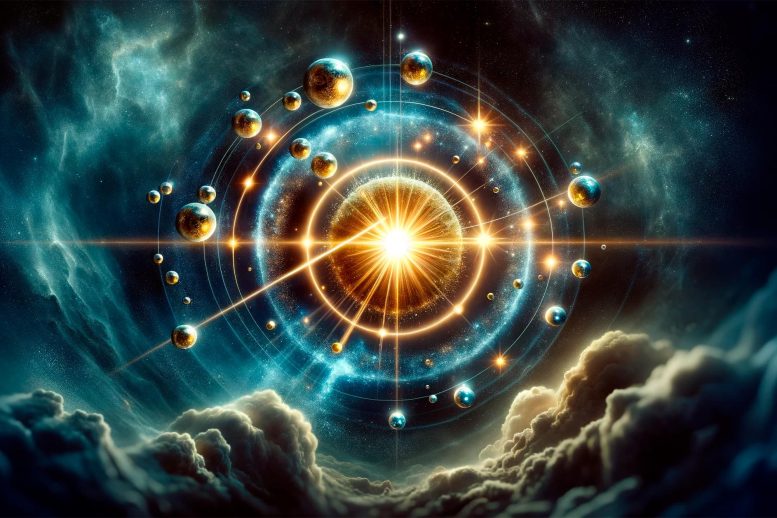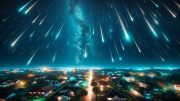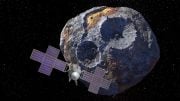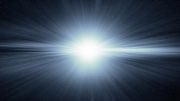
Researchers have found that ancient stars could generate elements heavier than those naturally found on Earth, with atomic masses over 260. This discovery enhances our understanding of element formation in stars, particularly through the rapid neutron capture process (r-process) occurring in neutron stars. Credit: SciTechDaily.com
New research reveals that ancient stars can create elements heavier than those on Earth, with atomic masses exceeding 260, advancing our understanding of cosmic element formation.
How heavy can an element be? An international team of researchers has found that ancient stars were capable of producing elements with atomic masses greater than 260, heavier than any element on the periodic table found naturally on Earth. The finding deepens our understanding of element formation in stars.
The Cosmic Element Factories
We are, literally, made of star stuff. Stars are element factories, where elements constantly fuse or break apart to create other lighter or heavier elements. When we refer to light or heavy elements, we’re talking about their atomic mass. Broadly speaking, atomic mass is based on the number of protons and neutrons in the nucleus of one atom of that element.
The heaviest elements are only known to be created in neutron stars via the rapid neutron capture process, or r-process. Picture a single atomic nucleus floating in a soup of neutrons. Suddenly, a bunch of those neutrons get stuck to the nucleus in a very short time period – usually in less than one second – then undergo some internal neutron-to-proton changes, and voila! A heavy element, such as gold, platinum, or uranium, forms.
Instability of Heavy Elements
The heaviest elements are unstable or radioactive, meaning they decay over time. One way that they do this is by splitting, a process called fission.
“The r-process is necessary if you want to make elements that are heavier than, say, lead and bismuth,” says Ian Roederer, associate professor of physics at North Carolina State University and lead author of the research. Roederer was previously at the University of Michigan.
“You have to add many neutrons very quickly, but the catch is that you need a lot of energy and a lot of neutrons to do so,” Roederer says. “And the best place to find both are at the birth or death of a neutron star, or when neutron stars collide and produce the raw ingredients for the process.
“We have a general idea of how the r-process works, but the conditions of the process are quite extreme,” Roederer says. “We don’t have a good sense of how many different kinds of sites in the universe can generate the r-process, we don’t know how the r-process ends, and we can’t answer questions like, how many neutrons can you add? Or, how heavy can an element be? So we decided to look at elements that could be made by fission in some well-studied old stars to see if we could start to answer some of these questions.”
Previously Unrecognized Patterns Identified
The team took a fresh look at the amounts of heavy elements in 42 well-studied stars in the Milky Way. The stars were known to have heavy elements formed by the r-process in earlier generations of stars. By taking a broader view of the amounts of each heavy element found in these stars collectively, rather than individually as is more common, they identified previously unrecognized patterns.
Those patterns signaled that some elements listed near the middle of the periodic table – such as silver and rhodium – were likely the remnants of heavy element fission. The team was able to determine that the r-process can produce atoms with an atomic mass of at least 260 before they fission.
“That 260 is interesting because we haven’t previously detected anything that heavy in space or naturally on Earth, even in nuclear weapon tests,” Roederer says. “But seeing them in space gives us guidance for how to think about models and fission – and could give us insight into how the rich diversity of elements came to be.”
For more on this research, see “Incredibly Profound” Evidence of Nuclear Fission Across the Cosmos.
Reference: “Element abundance patterns in stars indicate fission of nuclei heavier than uranium” by Ian U. Roederer, Nicole Vassh, Erika M. Holmbeck, Matthew R. Mumpower, Rebecca Surman, John J. Cowan, Timothy C. Beers, Rana Ezzeddine, Anna Frebel, Terese T. Hansen, Vinicius M. Placco and Charli M. Sakari, 7 December 2023, Science.
DOI: 10.1126/science.adf1341
The work appears in Science and was supported in part by the National Science Foundation and the National Aeronautics and Space Administration.









Be the first to comment on "The Cosmic Forge: How Ancient Stars Crafted Elements Beyond Earth’s Reach"